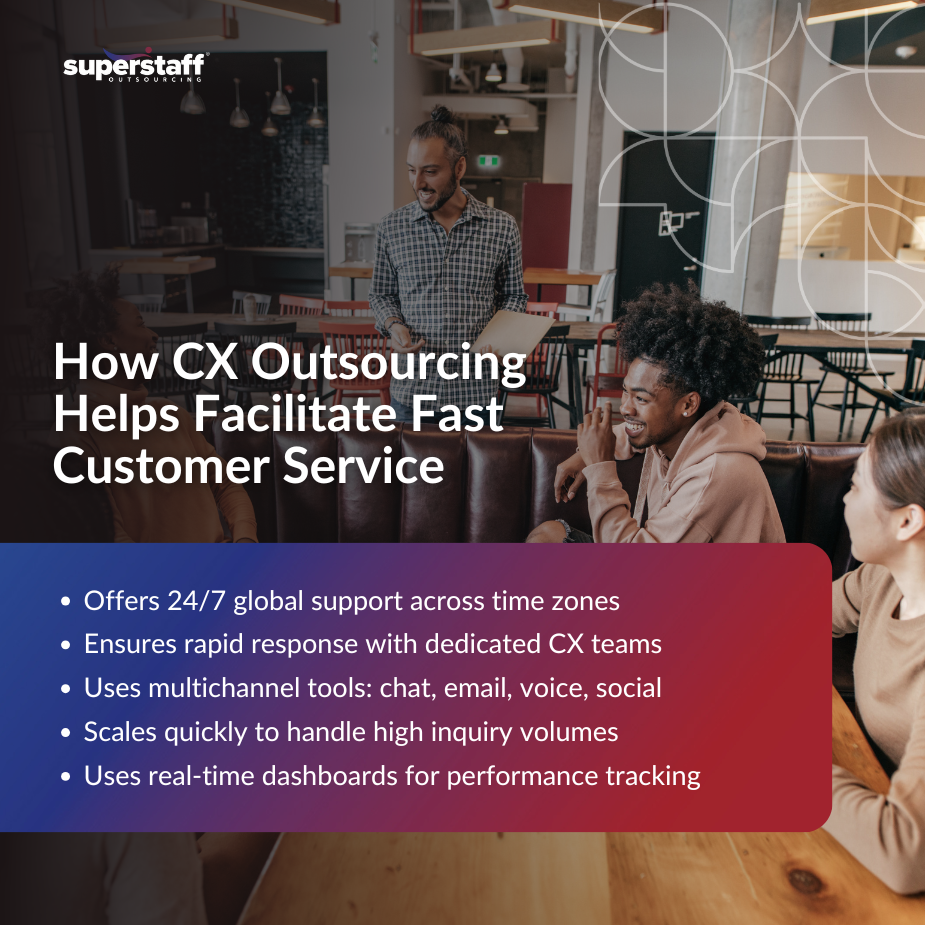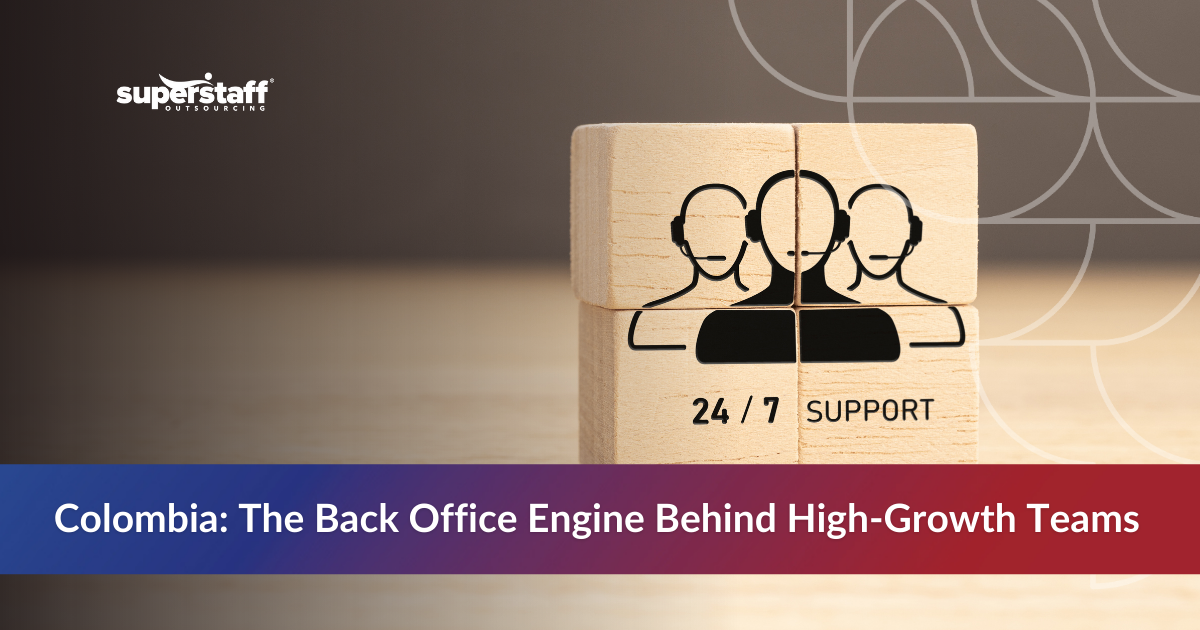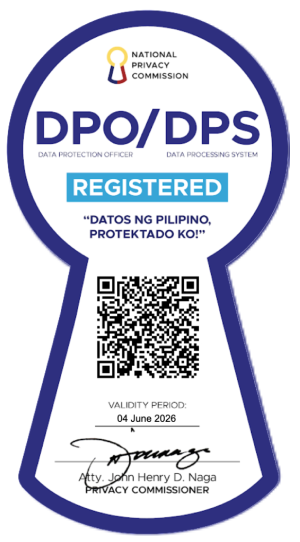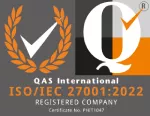
In 2025, if your brand doesn’t respond fast customer service, your customer might already be gone. The expectations around customer service have shifted dramatically, and fast customer service is no longer a competitive advantage; it’s the bare minimum.
Today’s consumers operate in a real-time world. They shop, stream, and solve problems on demand. This behavior has reshaped customer experience (CX) standards across every industry. Speed is no longer about convenience but trust, loyalty, and credibility. Brands that can’t deliver immediate support risk being replaced by those that can, especially when digital experiences are just a click away.
This blog explores the rise of the “One-Minute Rule”—the emerging benchmark where brands are expected to respond to customer inquiries within 60 seconds. We’ll examine how this new standard became the most critical CX metric in 2025 and why companies must build for speed to stay relevant.
We’ll also break down how outsourced teams empower businesses to meet these expectations through round-the-clock coverage, agile staffing, and multichannel support, making real-time service both scalable and sustainable.
The One-Minute Rule: A New CX Benchmark in 2025
Delivering fast customer service is no longer optional—it’s foundational for digital-first success. The One-Minute Rule refers to a fast-growing expectation that brands must respond to customer queries, whether via chat, email, or social media, within 60 seconds. This standard for fast customer service has become a new normal across industries as customers grow accustomed to instant digital experiences.
Consumer behavior has changed. People no longer wait patiently for help. They expect support when they need it, not a few hours or days later. This demand is driven by shrinking attention spans and the frictionless service models of tech giants.
Consider:
- E-commerce platforms that offer proactive chat widgets the moment a customer hesitates at checkout.
- Telehealth providers who triage patient symptoms in under a minute, cutting down ER visits.
- Banking apps with live chat agents who can verify identity and resolve issues instantly.
This growing urgency has elevated the One-Minute Rule from a “nice-to-have” into a critical business imperative.
But speed isn’t just about being quick—it’s about what it signals to your customer.
Speed = Trust: The Psychology Behind Fast Response
Do you ever think about why speed matters in customer service? Here’s why:
When a customer reaches out and receives a near-instant reply, it sends a strong psychological signal: We care. We’re here. You matter.
Fast response times build credibility. They create a sense of security and reliability. In contrast, slow replies can leave customers feeling ignored, unimportant, or even abandoned. These emotional responses directly affect loyalty and churn.
Studies show a strong correlation between fast response and high performance on customer support KPIs like Net Promoter Score (NPS) and Customer Satisfaction (CSAT):
- 80% of US consumers say that speedy customer service is among the most important factors contributing to positive CX.
- Brands that respond to customers within a minute can boost their conversion rates by up to 391%!
Speed builds momentum. Customers don’t want to repeat themselves or wait in long queues. By being responsive, brands reduce friction and increase goodwill—two things that go a long way in an era of heightened customer sensitivity.
With trust at stake, many businesses are racing to retool their CX infrastructure. Brands that respond quickly not only solve problems—they signal their commitment to fast customer service, which in turn boosts trust and retention.
Why In-House Teams Struggle to Meet the One-Minute Rule
Despite the urgency, most in-house customer service teams find it difficult to meet this 60-second standard.
Why?
- Coverage gaps: Internal teams typically work fixed shifts that don’t accommodate 24/7 availability.
- Limited bandwidth: Sudden surges in inquiries often overwhelm in-house staff.
- High costs: Scaling internal operations to meet real-time expectations requires substantial investments.
Add to that:
- Time zone mismatches for global customers.
- Agent burnout from excessive multitasking.
- Lack of built-in escalation pathways that slows down response and resolution.
These constraints make it nearly impossible for in-house teams to deliver fast customer service consistently.
Outsourcing has stepped in to fill this urgent gap, at scale and at speed.
These limitations make it nearly impossible to deliver fast customer service around the clock without outside support.

Outsourcing: Your Fast-Response Engine
Outsourcing customer service to a Business Process Outsourcing (BPO) provider is one of the most effective ways to deliver sub-60-second response times.
Why? BPOs are purpose-built to provide agility, scale, and efficiency. Their infrastructure allows:
- Dedicated teams aligned to customer time zones.
- Multichannel support across voice, chat, email, and social.
- 24/7 operations with trained agents who are equipped to resolve issues quickly.
Additionally, experienced BPOs implement:
- Smart workforce scheduling tools.
- AI-powered ticket routing.
- Pre-built escalation and QA processes that shorten handling time.
Outsourcing allows brands to respond instantly without overloading their core teams.
This is especially critical in high-stakes industries where seconds can define success.
Industry Spotlight: The One-Minute Rule in Action
Let’s look at how different industries are applying fast customer service in under a minute to improve CX outcomes:
- E-commerce: When customers abandon their carts, an instant chat pop-up offering a discount or FAQ support can recover the sale. Fast response prevents lost revenue and deepens engagement.
- Healthcare: Telehealth services deploy live agents or bots for immediate triage. This reduces unnecessary ER visits, enhances patient experience, and prioritizes urgent cases more efficiently.
- Finance: Fraud alerts require real-time support. Banks that provide immediate verification or assistance prevent further losses and build confidence in digital banking tools.
In each case, speed doesn’t just improve convenience—it saves money, time, and trust.
Each case highlights the same thing—customers value speed because their needs are urgent.
Measuring the Right Metrics: Don’t Just Count Speed—Leverage It
To make the most of the One-Minute Rule, businesses must focus on the right customer support KPIs:
- First Response Time (FRT): How long does it take for a customer to receive an initial response?
- Average Handling Time (AHT): How efficiently is the inquiry resolved?
- Time to Resolution: Are problems resolved on the first contact, or do they linger?
Tracking these metrics isn’t enough. The real value lies in:
- Using KPI trends to forecast surges.
- Identifying weak points in escalation paths.
- Aligning staffing to customer activity peaks.
Outsourcing partners often provide real-time dashboards and weekly performance reviews that allow brands to adjust strategy quickly.
Meeting the One-Minute Rule isn’t just about reacting—it’s about building proactive systems.
SuperStaff’s Role: Speed Without the Sacrifice
At SuperStaff, we believe fast customer service shouldn’t compromise quality. Our model balances both by providing:
- Agile, omnichannel support teams ready to engage customers within seconds.
- Cultural alignment for seamless interactions that reflect your brand voice.
- Continuous training that keeps agents sharp and effective.
- Smart scheduling that ensures 24/7 coverage without burnout.
- Real-time dashboards and client visibility for performance transparency.
Whether you’re scaling customer care for an e-commerce brand or providing compliance-critical support in healthcare or finance, SuperStaff delivers the speed, scale, and expertise you need.
Brands that get this right don’t just compete—they lead.
Fast Customer Service Is the Future—Are You Ready?
In 2025, speed has become the most defining element of customer experience success.
Customers now expect sub-60-second replies. Customer service expectations are higher than ever, and fast response is a key trust builder. Loyalty, conversions, and satisfaction are now directly tied to how quickly your brand responds.
With the One-Minute Rule shaping the future of CX, outsourcing is the most effective way to keep up. Teams like SuperStaff help businesses stay competitive by offering scalable, round-the-clock support aligned with today’s fast-paced consumer demands.
Ready to build a real-time CX engine? Partner with SuperStaff and meet every customer in under a minute—every time.






